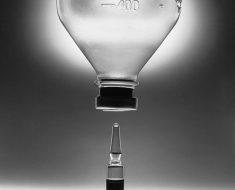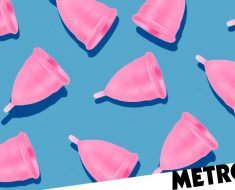Morgan Pohl was often uncomfortable at school.
Due to a condition called polymicrogyria, in which the brain has many ridges or folds, the 9-year-old suffers from excessive drooling. It used to leave her soaking wet during the school day at Doull Elementary in Denver. The fourth grader, who is nonverbal, tried wearing scarves, bandanas and bibs to soak up her saliva. “She did not like the feel of anything around her neck,” says Morgan’s great-grandmother Marianne Law, 70. “She was just wet.”
In fact, Morgan’s special education teacher Lynn Malie went so far as to ask Law to provide 25 shirts so she could change Morgan throughout the day.
“I saw the impact of the constant drooling,” says Malie. “People obviously notice. It gets on her shirt and is a big ring, all the way down to her belly. I knew we had to do something.” Malie set an alarm on the iPad Morgan uses to communicate to go off five times a day, reminding her to change her shirt.
“She’s really high functioning,” Malie says. “She notices when kids don’t want to touch her. I thought we could minimize that and increase her confidence and learning by getting her in a dry shirt.”
At the time, the school had an old washer and dryer in the basement that custodians used to wash mops. That’s what Malie used to launder Morgan’s shirts.
“It wasn’t ideal,” Malie admits. “It was a terrible washer, so it wouldn’t spin all the water out. We’d put really soggy, soggy wet clothes in the dryer, and the dryer was terrible and it wouldn’t dry it and we’d have to dry it four or five times a load.”
But that all changed in January, when the school received a brand-new washer and dryer as part of Whirlpool’s Care Counts program. Not only does the washer-dryer combo benefit Morgan, but also other students at her school who don’t have access to washing machines at home and may feel embarrassed about not wearing clean clothes to school. The program has put washers and dryers in 82 schools across 18 cities, and is further expanding.

At Doull, the school counselor works with families who are temporarily homeless, scheduling time for them to come to the school to do laundry. Assistant Principal Rob Suglia says he and other administrators spend a lot of time thinking about how to combat absenteeism and get kids to come to school. “I never, ever would have thought a washer and dryer would fit into students coming to school more and being more engaged and happier,” he says. But, he says, it does.
And it even helps with everyday mishaps. When a student recently spilled ketchup on her shirt at lunch, she wore her jacket for a few minutes while the staff threw her top in the wash and ran a 10-minute express load. “It was done before she was done with lunch,” Suglia says.
Set in the cafeteria rather than the basement, the new laundry machines have brought Morgan more independence than ever. While preschool teachers used to launder nap mats and blankets at home every week, Morgan and her classmates now handle that as part of their life skills class.
And having dry, clean shirts has greatly improved her experience at school.
“It’s changed the way people respond to her in the classroom,” her Malie says. “Morgan is kind of the leader. … She gets to be in charge and help out the little kids.”
“When she puts that dry shirt on, she is just beaming,” Law says. “It’s given her more self-confidence,” Laws says.
Source: Read Full Article





